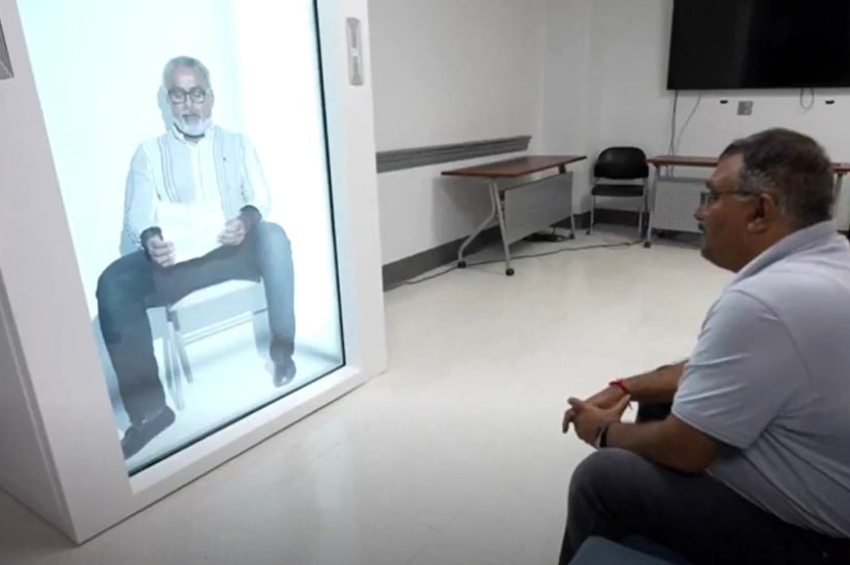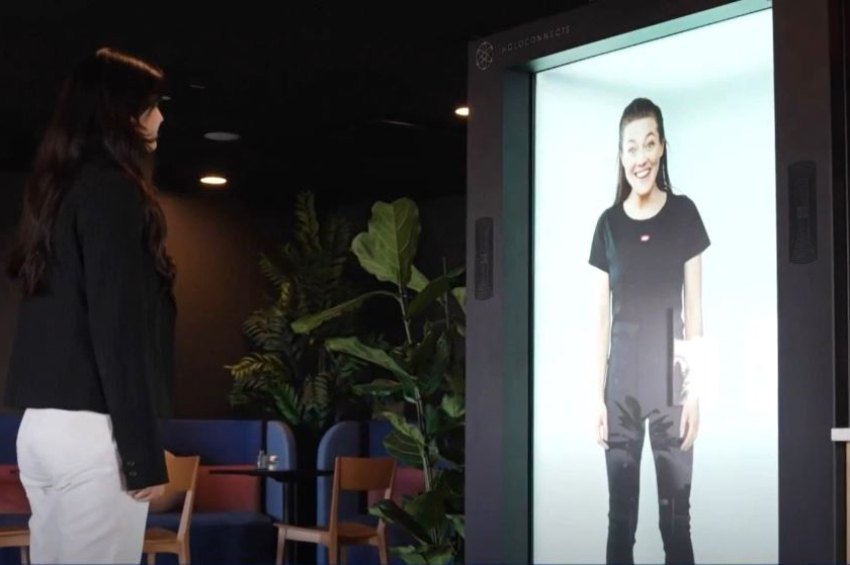Texas hospital installs holographic machine to let doctors see their patients remotely
Crescent Regional Hospital, a rural medical institution near Dallas, Texas, is revolutionizing telemedicine by becoming the first in the U.S. to offer appointments via a holographic machine. The innovation allows busy specialists, who often juggle multiple facilities in a single day, to consult with patients remotely as full-sized, lifelike 3D projections.
The system, called the Holobox, is the brainchild of Dutch startup Holoconnect. Standing as tall as an oversized vending machine, it creates the illusion of three-dimensionality using a transparent LCD screen housed behind anti-glare glass. While the images aren’t true holograms - there’s no projection into 3D space - the effect is strikingly realistic, according to local media reports.
More to read:
U.S. Congress introduces bills to break up UnitedHealth Group and other insurance monopolies
The Star Wars-like holographic setup is currently being used at Crescent for pre- and post-surgery consultations. Resident physicians believe that patients seem more engaged during holographic sessions compared to traditional telehealth visits over platforms like Zoom.
For Crescend doctors, the Holobox eliminates the need for time-consuming travel between medical centers. Instead, they report to their primary clinics, sit in front of cameras and white backdrops, and interact with patients through the holographic system. While the specialists see them via the monitor, onsite nurses handle physical exams.
More to read:
Microsoft to deliver AI-powered medical therapy app
The implications are significant, especially for rural areas where medical professional shortages are a chronic problem. In Texas alone, dozens of rural hospitals have shuttered over the past decade, leaving many communities with limited access to care.
The Holobox comes with a steep price tag - $65,000 upfront and $1,200 in monthly maintenance fees. However, Crescent’s CEO Raji Kumar believes the investment is worth it. The technology could help rural hospitals retain patients who might otherwise bypass local facilities due to the lack of specialist care.
When no one needs the cabin for seeing a doctor, it may run advertising content, so the machine is not completely a money drainer.
More to read:
New AI technology identifies brain tumors faster and more accurate than human doctors
The Holobox offers a glimpse into the future of medicine, blending cutting-edge technology with a practical – though not truly ideal – solution to one of healthcare’s most persistent challenges. By 2026, says the American Hospital Association, the U.S. will face a shortage of 100,000 critical health care workers.
John Henderson, CEO of the Texas Organization of Rural and Community Hospitals, views telehealth as a vital tool for addressing these gaps but cautions it’s not a “silver bullet” as machines don’t cure people and medical institutions need more specialists.
***
NewsCafe relies in its reporting on research papers that need to be cracked down to average understanding. Some even need to be paid for. You can support us via PayPal: office[at]rudeana.com or paypal.me/newscafeeu, or https://buymeacoffee.com/newscafe . Any amount is welcome.








